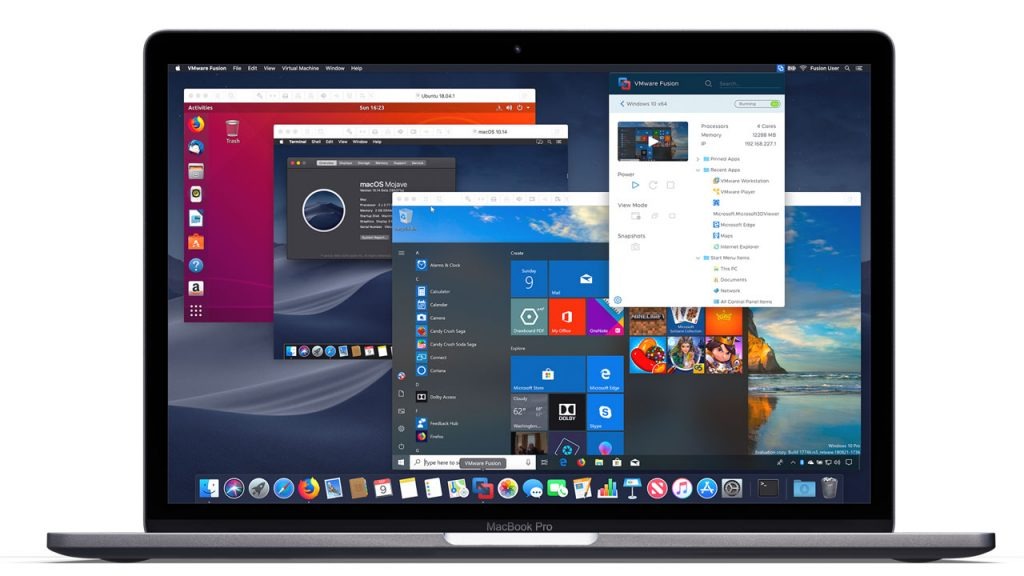

- VMWARE OR PARALLELS SOFTWARE FOR MAC MAC OS X
- VMWARE OR PARALLELS SOFTWARE FOR MAC MAC OS
- VMWARE OR PARALLELS SOFTWARE FOR MAC SERIAL
- VMWARE OR PARALLELS SOFTWARE FOR MAC MAC

Both products allow you to choose between using Network Address Translation to share your Mac’s network connection or choosing bridged access to a specific network adapter. All of these features make it a more customizable than Fusion to a user or an application’s needs.īoth Parallels and Fusion offer limited choices for how virtual machines handle networking.
VMWARE OR PARALLELS SOFTWARE FOR MAC SERIAL
Parallels also supports the connection of multiple hard drive images and the use of multiple disk images or physical drives for use as CD/DVD-ROMs, as well as the creation of virtual serial and parallel ports. (Both applications use dynamically expanding hard drive images, but both also require a maximum size be set for the image when it is created.) Parallels also offers the ability to clone or re-create with a different maximum size the hard drive image of a virtual machine. In contrast, Parallels provides the ability to specify more granular virtual hardware information as well as the use of a disk image to mimic the functionality of a floppy drive. Fusion currently allows for configuration of shared folders, the use of a single hard drive image file, sound, CD-ROM access (read-only) and some basic network options. Parallels offers a much broader set of options for advanced configuration.

Overall, both Parallels and Fusion rate well in the ease-of-use category - or will once some of the reliability issues are worked out during Fusion’s development. This makes working between the two operating systems much more seamless.
VMWARE OR PARALLELS SOFTWARE FOR MAC MAC
One of those is clipboard support, allowing you to copy and paste between Mac and Windows applications. Parallels also offers a couple of features that make it more user-friendly than Fusion. This is one of the few places where Fusion truly delivers something that every user will appreciate that Parallels does not, though this feature is slated for the next version of Parallels’ software, Desktop 2. But, as with the shared folders feature, I found that it did not always function properly. This is actually a much easier method than setting up shared folders, and it can be used without having to configure anything.
VMWARE OR PARALLELS SOFTWARE FOR MAC MAC OS
VMware delivers another option to accessing files between operating systems with its support for drag and drop of files and folders between virtual machines and Mac OS X. The shared folders technique used in both applications is solid, though it took me a couple of reinstalls of the VMware Tools to get this to function properly in Fusion.
VMWARE OR PARALLELS SOFTWARE FOR MAC MAC OS X
With their respective tool sets installed under Windows, users can easily move between the Windows and Mac OS X environments. Most users will find both Fusion and Parallels easy to use and will probably never even need to adjust the configuration settings from their defaults. Fusion also supports network boot from a Windows PXE server, which Parallels does not.Īlthough Parallels boots consistently, Fusion is prone to the occasional unexplained Windows boot failure (generally resolved by simply rebooting the virtual machine). For its part, Parallels manages these features through a virtual machine configuration dialog. One difference is that Fusion provides you with a virtual BIOS configuration tool that can be used to change boot options such as the order in which the virtual machine searches for a bootable drive. The boot process for virtual machines created with either Parallels or Fusion is essentially the same as the boot process for an actual PC.


 0 kommentar(er)
0 kommentar(er)
